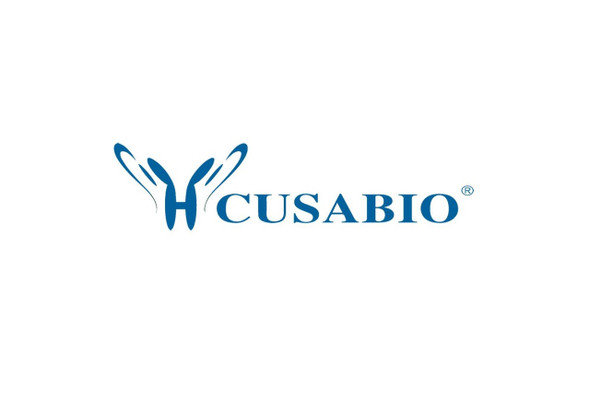Cusabio Mouse Recombinants
Recombinant Mouse Mixed lineage kinase domain-like protein (Mlkl) | CSB-YP861529MO
- SKU:
- CSB-YP861529MO
- Availability:
- 25 - 35 Working Days
Description
Recombinant Mouse Mixed lineage kinase domain-like protein (Mlkl) | CSB-YP861529MO | Cusabio
Alternative Name(s): MlklMixed lineage kinase domain-like protein
Gene Names: Mlkl
Research Areas: Others
Organism: Mus musculus (Mouse)
AA Sequence: MDKLGQIIKLGQLIYEQCEKMKYCRKQCQRLGNRVHGLLQPLQRLQAQGKKNLPDDITAALGRFDEVLKEANQQIEKFSKKSHIWKFVSVGNDKILFHEVNEKLRDVWEELLLLLQVYHWNTVSDVSQPASWQQEDRQDAEEDGNENMKVILMQLQISVEEINKTLKQCSLKPTQEIPQDLQIKEIPKEHLGPPWTKLKTSKMSTIYRGEYHRSPVTIKVFNNPQAESVGIVRFTFNDEIKTMKKFDSPNILRIFGICIDQTVKPPEFSIVMEYCELGTLRELLDREKDLTMSVRSLLVLRAARGLYRLHHSETLHRNISSSSFLVAGGYQVKLAGFELSKTQNSISRTAKSTKAERSSSTIYVSPERLKNPFCLYDIKAEIYSFGIVLWEIATGKIPFEGCDSKKIRELVAEDKKQEPVGQDCPELLREIINECRAHEPSQRPSVDGRSLSGRERILERLSAVEESTDKKV
Source: Yeast
Tag Info: N-terminal 6xHis-tagged
Expression Region: 1-472aa
Sequence Info: Full Length
MW: 56.3 kDa
Purity: Greater than 90% as determined by SDS-PAGE.
Relevance: Pseudokinase that plays a key role in TNF-induced necroptosis, a programmed cell death process. Activated following phosphorylation by RIPK3, leading to homotrimerization, localization to the plasma mbrane and execution of programmed necrosis characterized by calcium influx and plasma mbrane damage. Does not have protein kinase activity.
Reference: The pseudokinase MLKL mediates necroptosis via a molecular switch mechanism.Murphy J.M., Czabotar P.E., Hildebrand J.M., Lucet I.S., Zhang J.G., Alvarez-Diaz S., Lewis R., Lalaoui N., Metcalf D., Webb A.I., Young S.N., Varghese L.N., Tannahill G.M., Hatchell E.C., Majewski I.J., Okamoto T., Dobson R.C., Hilton D.J. , Babon J.J., Nicola N.A., Strasser A., Silke J., Alexander W.S.Immunity 39:443-453(2013)
Storage: The shelf life is related to many factors, storage state, buffer ingredients, storage temperature and the stability of the protein itself. Generally, the shelf life of liquid form is 6 months at -20?/-80?. The shelf life of lyophilized form is 12 months at -20?/-80?.
Notes: Repeated freezing and thawing is not recommended. Store working aliquots at 4? for up to one week.
Function: Pseudokinase that plays a key role in TNF-induced necroptosis, a programmed cell death process. Activated following phosphorylation by RIPK3, leading to homotrimerization, localization to the plasma membrane and execution of programmed necrosis characterized by calcium influx and plasma membrane damage. Does not have protein kinase activity.
Involvement in disease:
Subcellular Location: Cytoplasm, Cell membrane
Protein Families: Protein kinase superfamily
Tissue Specificity: Highly expressed in thymus, colon, intestine, liver, spleen and lung. Expressed at much lower level in skeletal muscle, heart and kidney. Not detected in brain.
Paythway:
Form: Liquid or Lyophilized powder
Buffer: If the delivery form is liquid, the default storage buffer is Tris/PBS-based buffer, 5%-50% glycerol. If the delivery form is lyophilized powder, the buffer before lyophilization is Tris/PBS-based buffer, 6% Trehalose, pH 8.0.
Reconstitution: We recommend that this vial be briefly centrifuged prior to opening to bring the contents to the bottom. Please reconstitute protein in deionized sterile water to a concentration of 0.1-1.0 mg/mL.We recommend to add 5-50% of glycerol (final concentration) and aliquot for long-term storage at -20?/-80?. Our default final concentration of glycerol is 50%. Customers could use it as reference.
Uniprot ID: Q9D2Y4
HGNC Database Link: N/A
UniGene Database Link: UniGene
KEGG Database Link: KEGG
STRING Database Link: STRING
OMIM Database Link: N/A









